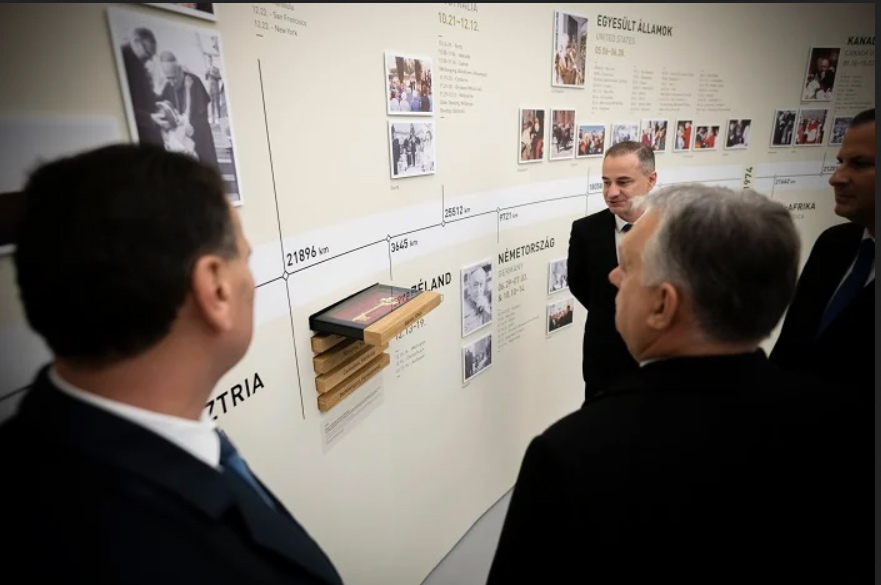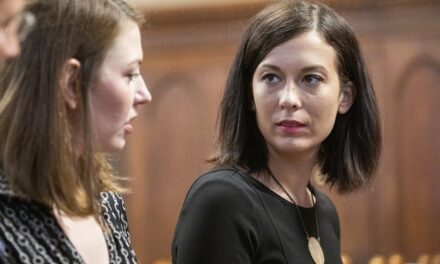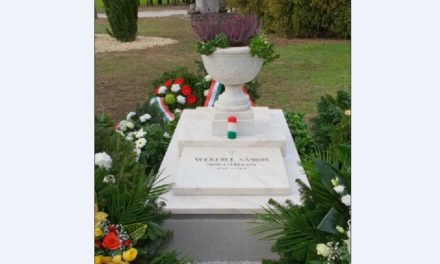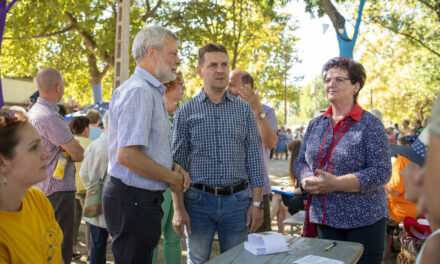The (F)objective (O)bjective (S)ajtó is now obliviously spreading the word of mouth that Viktor Orbán did not participate in the central commemoration in Budapest because he fled to Zalaegerszeg out of fear after he called his sectarians to Klára Dobrev Street. And besides, the prime minister closed the entire city, barricaded himself. Although Viktor Orbán brushed aside this suggestion in his speech on Saturday with the simple sentence that it would be time for the left to get used to the fact that Hungary does not consist only of Budapest, and we would not give much chance to Gyurcsány and her shadow government occupying the parliament by holding onto the necks of the teachers In Orbán's absence, however, it is important to discuss why Viktor Orbán went to Zalaegerszeg. Let's quote the prime minister himself right away, who said at the handing over of the Mindszentyneum building on Saturday, "according to the left, which looks down on us rural people, it is inappropriate to celebrate today in Zalaegerszeg, as they say, only in Zalaegerszeg. They do not understand that Budapest is not the same as the country. They do not understand that 1956 was not a revolution of a city, but of the entire country, even the entire nation".
But what is the Mindszentyneum, for which the minister traveled to Zalaegerszeg, and what does Zalaegerszeg have to do with József Mindszenty? Well, the former archbishop of Esztergom was active as the abbot of Zalaegerszeg for twenty-five years, and the memorial site named after him is intended to show not only his activities in Zalaegerszeg, but also the persecution of the church by the communist dictatorship and his struggle against Mindszenty's power.

Prime Minister Viktor Orbán and Mayor Zoltán Balaicz (Fidesz-KDNP) in the Mindszentyneum; photo: MTI
He carried out decisive charity work in Zalaegerszeg
József Pehm (Mindszenty) was born on March 29, 1892 in Csehimindszent, Vas county, and moved to Zalaegerszeg as a high school religion teacher in 1917, from 1919 he was the parish priest of the town, while from 1944 he was bishop of Veszprém, and from 1945 he was archbishop of Esztergom, cardinal became. Mindszenty's struggle to help the poor in Zalaegerszeg is confirmed by countless contemporary documents, especially in the times after the Trianon, when more than half of the population fell into poverty as a result of the economic crisis. For decades, he was one of the most active members of the city's charitable associations, organized countless fundraisers, published charity appeals, and in 1936, as a parish priest, he founded the Vármegyei Catholic Charitable Society, which used its income to provide free shoes to about a hundred young students every year. He also paid attention to the education of poor students: every year he provided twenty to twenty-five talented students from peasant families with free accommodation and food in the city with industrialists and widows, supporting them with the rent. He encouraged well-to-do families to feed some of the needy one or two days a week. He also distributed five acres of land belonging to the parish among the poor for free garden use. On his initiative, the public welfare office was established in 1930, but he took part in the organization of ONCSA constructions, so around 70 houses could be built for needy families. A very eloquent recollection of Mindszenty by Csongor Kardos, the head of the house of the Zalaegerszeg Ferences Rendház, which can also be read on the website of the memorial house:
"we, Franciscans, do not primarily see in him the hard-handed parish priest-bishop; nor the consistent politician; nor the leader who defends his truth and interests through fire and water, but the pastor who sits on a cart at Christmas and distributes his donations to poor families; who notices and supports orphans and widows; or an old man broken under the burden of obedience, who brings hope and consolation to the distant Hungarians like him.”

Photo: MTI
No oppressive power found a hold on him
The biggest problem with Mindszenty was that he was not willing to submit to any power, be it Nazi or Communist, so he was persecuted by both fascists and communists. His trials began when in 1944 he and his fellow bishops protested against the persecution of Jews in a circular letter. At the same time, after the end of the Second World War, he also spoke out against the communist dictatorship and the Soviet occupation, especially with regard to the increasingly open persecution of Christians and nationalizations, so the communists also arrested him in 1948, and in the infamous Andrássy út 60 until the ÁVH weeks tortured him. He was sentenced to life imprisonment in a conceptual trial, from which he was placed under house arrest in 1955, and was finally released on October 30, 1956. He gave a memorable radio speech on November 3, describing the events as a freedom struggle. In the early hours of November 4, the cardinal applied for asylum at the United States Embassy in Budapest, which he was granted. He stayed here for fifteen years, and then, following an agreement between the Vatican, the United States and the Hungarian government, he left the embassy and Hungary on September 28, 1971. He then visited Hungarian communities around the world and did his pastoral work. József Mindszenty died in Vienna in 1975, was buried in Austria, and was reburied in Hungary in 1991. The beatification of the cardinal is in progress.
The foundation stone of the Mindszenty József Visitor Center was laid on July 2, 2020, blessed by Cardinal Péter Erdő, Primate, Archbishop of Esztergom-Budapest. The museum not only commemorates one of the most defining and iconic figures of Hungarian history and church history of the 20th century, but the Mindszenty Route will also start from here, and Zalaegerszeg will also be an important stop and one of the regional centers of the Maria Pilgrimage Route from Csíksomlyó to Mariazell. In the exhibition space on the second floor, the communist dictatorship's persecution of the church is presented. In addition to permanent and temporary exhibitions, the new building also houses a conference room, offices and community rooms. The Mindszentyneum, which is part of the Modern Cities program and part of the Settlement Development operative program, will open to the public on October 25 as a member institution of the Göcse Museum.
Source: pestisracok.hu
In our opening picture: Viktor Orbán at the handover of the Mindszentyneum building. Photo: MTI












